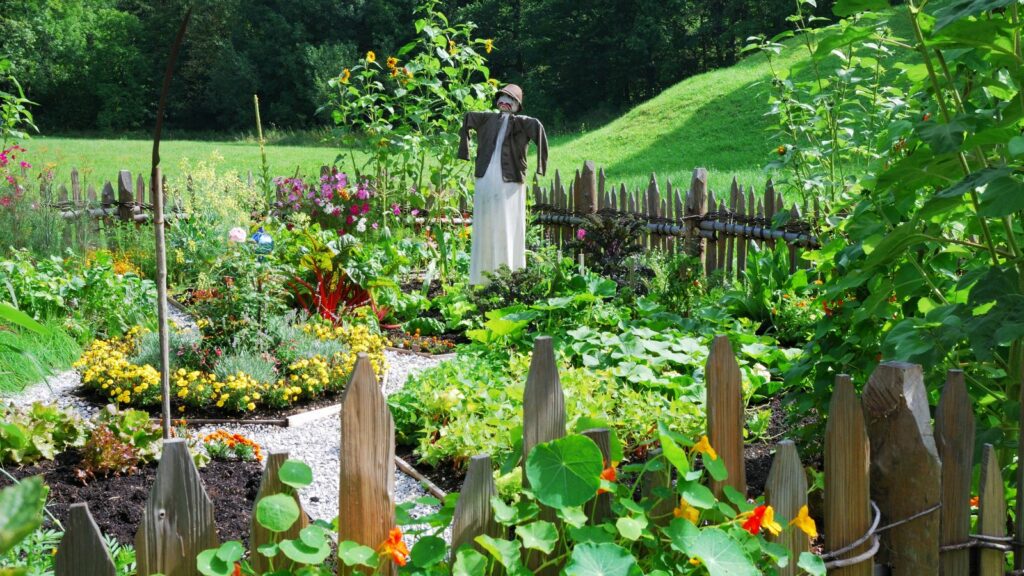Garden enthusiasts know that a well-defined edge is the secret sauce to a visually appealing outdoor space. Among the myriad options available, wood garden edging stands out as a timeless choice. It’s not only aesthetically pleasing but also environmentally friendly, offering a natural touch to any garden design.
Wood garden edging can transform an ordinary backyard into an extraordinary oasis. But how do you choose the right type of wood, and what’s the best way to install it? Whether you’re a seasoned gardener or a beginner, this article will guide you through the ins and outs of wood garden edging, helping you create a garden that’s the envy of the neighborhood. Stay tuned for some practical tips and inspiring ideas.
Wood Garden Edging
One reaps numerous benefits by opting for wood garden edging, including high aesthetic appeal and positive environmental impact.

Wood edging graces a garden with a natural, timeless charm. It enhances the landscape, blending seamlessly with the environment. One can sit back, marveling at its warm and inviting look that transforms the garden into an outdoor haven. For instance, picture an undulating garden contour edged smartly with cedar strips. Presenting the sight of a well-defined, yet organically crafted, garden, wood edging invariably boosts the overall visual appeal of the space.
Environmentally-conscious gardeners lean towards wood garden edging. Not just due to its organic aesthetics, but also for its minimal impact on the environment. Moving towards eco-friendly practices in gardening, wood is a renewable resource. Furthermore, responsibly sourced wood used in garden edging contributes towards a positive environmental footprint. A case in point: opting for wood edging made from trees grown in managed forests.
Types of Wood Used for Garden Edging
In any gardening project, the choice of materials significantly impacts the final look and performance. Wood edging, with its wide spectrum of options, provides flexibility for gardeners to choose according to their aesthetic preferences and durability needs. Here are some common types of wood used in garden edging:

Cedar wood tops the list when it comes to popular choices for garden edging. Distinguishable by its reddish-brown hue and pleasant aroma, cedar retains its color for a long time, lending consistency to the garden decor. It possesses innate resistance to rot and insects, enhancing its lifespan. When it comes to sustainability, cedar is an efficient choice, as sources like the Western Red Cedar are commonly harvested from well-managed forests, and its leftover bits can also benefit compost piles.
Just a step behind Cedar, redwood offers comparable allure and durability for garden edges. Blessed with a rich color scheme of light red to dark mahogany, redwood imparts a high-end look to the garden beds. It inherits decay-resistant properties from its high tannin content, delaying the need for replacement.
Installation Tips for Wood Garden Edging
Building off the information on sustainable wood choices for garden edging, the installation process comes as a pivotal step. It involves not only precise physical work but also keen attention to site management and edging security measures. These components collaborate to shape an appealing, enduring garden edge.

In the initial step, site preparation reigns essential. One must first identify the desired garden edge path. After that, use a garden hose or a length of rope to outline this path. Then, cut along the marked line with a half-moon edger or spade, excavating a trench that’s around 6 inches deep and 4 inches wide.
Secondly, it becomes necessary to level the bottom of the trench. This flat surface ensures a stable base for the wood. One can use a hand tamper for this task. It’s vital to confirm the levelness of the trench using a level tool, making required adjustments if the surface is uneven.
Lastly, underlaying a strip of landscape fabric along the trench helps prevent the growth of unruly weeds around the wooden edging. Overlap the strips for optimal coverage, staking them into the ground before filling the trench with about 2 inches of sand and leveling it.

